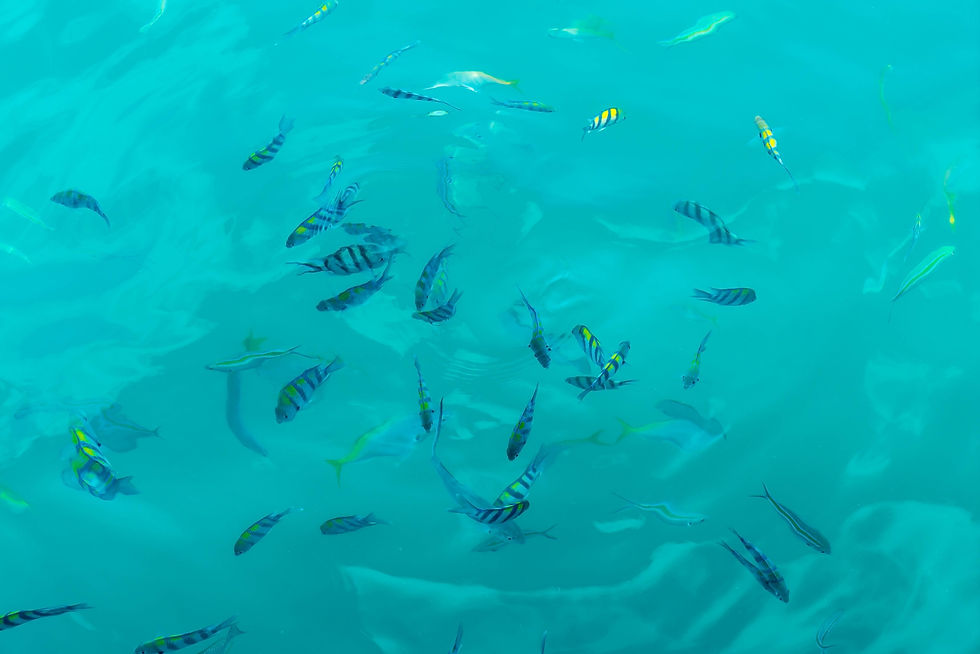Optimizing Production: The Importance of Water Treatment in Fish Farms
- Organica Biotech
- Apr 15, 2024
- 3 min read
In the dynamic world of aquaculture, water quality management stands as a fundamental pillar for optimizing production and ensuring the health of fish stocks. Effective water treatment strategies play a pivotal role in maintaining pristine aquatic environments within fish farms, fostering optimal conditions for growth, reproduction, and overall productivity. In this article, we'll delve into the significance of Fish Farm Water Treatment and explore how it contributes to maximizing production while upholding sustainability.

The Vital Role of Water Treatment
Water serves as the lifeblood of fish farms, acting as the habitat where fish live, feed, and grow. Therefore, maintaining high water quality standards is imperative for the success of aquaculture operations. Here's why water treatment is crucial:
Nutrient Management: Fish excrete waste and uneaten feed, contributing to the buildup of nutrients in the water. Effective water treatment methods help manage nutrient levels, preventing excessive accumulation that can lead to water quality issues such as eutrophication and algal blooms.
Disease Prevention: Poor water quality can predispose fish to stress and disease, leading to reduced growth rates and increased mortality. Water treatment measures, including disinfection and filtration, help mitigate the spread of pathogens and ensure a healthy environment for fish.
Oxygenation: Adequate oxygen levels are essential for fish respiration and metabolic processes. Water treatment systems, such as aeration devices and oxygen generators, help oxygenate the water, preventing oxygen depletion and supporting optimal fish health and growth.
Waste Management: Efficient removal of organic waste and sediment from the water is essential for maintaining water clarity and preventing the accumulation of sludge at the bottom of fish ponds. Mechanical filtration and sedimentation techniques are commonly employed for waste management in fish farms.
Strategies for Effective Water Treatment
To optimize production and ensure the sustainability of fish farming operations, various water treatment strategies are utilized:
Biological Filtration: Biological filtration systems, such as biofilters and constructed wetlands, harness beneficial bacteria to break down organic waste and convert harmful compounds like ammonia into less toxic forms. This helps maintain water quality and supports a healthy microbial ecosystem within fish ponds.
UV Sterilization: Ultraviolet (UV) sterilizers are used to disinfect water by exposing it to UV light, effectively killing pathogens such as bacteria, viruses, and parasites. UV sterilization helps prevent disease outbreaks and ensures the health of fish populations.
Ozone Treatment: Ozone treatment systems are employed to oxidize organic pollutants and remove dissolved organic compounds from the water. Ozone is a powerful oxidizing agent that effectively breaks down organic matter, improving water clarity and quality.
Smart Monitoring Systems: Advanced monitoring systems equipped with sensors and data analytics enable real-time monitoring of water quality parameters such as temperature, pH, dissolved oxygen, and ammonia levels. This allows fish farmers to identify and address potential issues promptly, optimizing production efficiency and minimizing risks.
Conclusion
In conclusion, water treatment plays a pivotal role in optimizing production and ensuring the sustainability of fish farming operations. By effectively managing water quality parameters, controlling nutrient levels, preventing disease outbreaks, and promoting waste management, fish farmers can create a conducive environment for fish growth and reproduction. As the aquaculture industry continues to evolve, the adoption of innovative water treatment technologies and practices will be essential for meeting growing demand for seafood while minimizing environmental impact and ensuring the long-term viability of fish farming operations. Through a commitment to effective water treatment, fish farmers can maximize production efficiency and contribute to a more sustainable and resilient aquaculture sector.



Comments